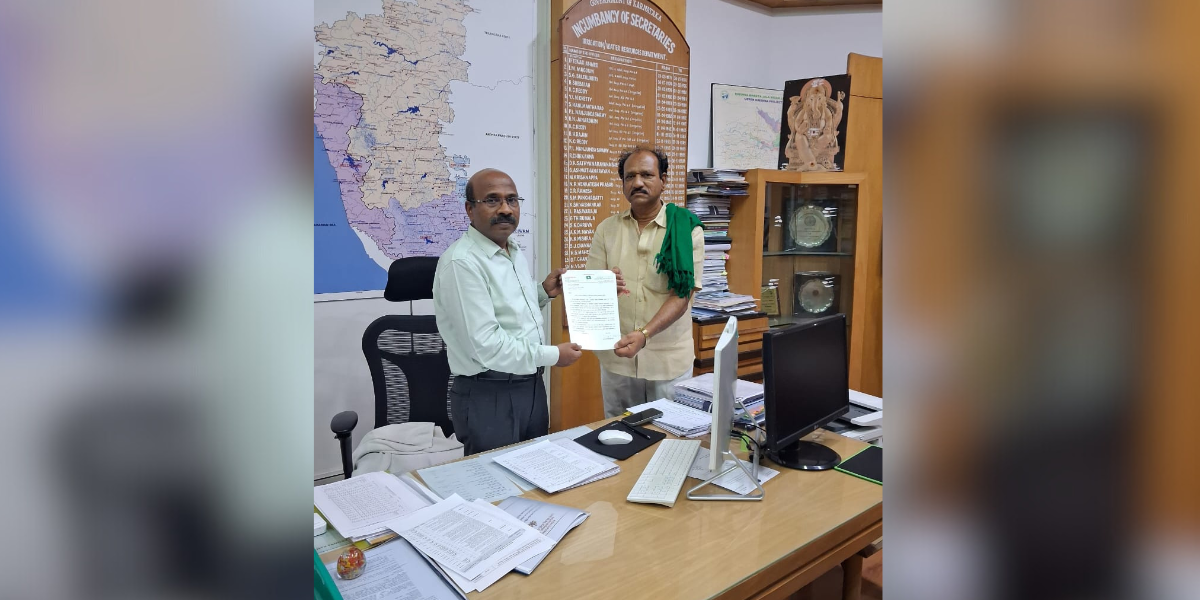The Tungabhadra reservoir irrigates 16.5 lakh acres across nine districts in Karnataka, Andhra Pradesh, and Telangana. Farmers lament that Gate No. 19, collapsed in August 2023, remains temporarily patched
Published May 31, 2025 | 5:19 PM ⚊ Updated May 31, 2025 | 5:19 PM

Farmers question Government's apathy over installation of new gates in Tungabhadra reservoir amid monsoons
Synopsis: Despite Karnataka’s early monsoon, the government has yet to install Gate No. 19 at the Tungabhadra reservoir in Hosapete, Ballari, leaving farmers in four districts uncertain about cropping plans. Ironically, the Congress government recently celebrated its two-year anniversary in Hosapete, even as unresolved irrigation issues continue to threaten agricultural livelihoods across the region
Despite the early onset of the monsoon in Karnataka, the state government has failed to install Gate No. 19 of the Tungabhadra reservoir in Hosapete, Ballari district. This delay has left farmers in Raichur, Koppal, Vijayanagara, and Hosapete uncertain whether they can grow one or two crops this season.
Two weeks ago, the Congress government celebrated its two-year anniversary in Hosapete under the banner Samarpana Sankalpa Samavesha. Ironically, the venue itself continues to face a major agricultural crisis that the government has yet to resolve.
According to local farmers, repeated pleas to install new gates at the dam have fallen on deaf ears. Purushotham Gowda, President of the Tungabhadra Farmers Association, expressed concern over the delay in replacing the damaged gate. “The gates were installed around 1953. They’ve grown too weak to withstand the monsoon currents,” he said.
The Tungabhadra reservoir supplies water to nine districts across Karnataka, Andhra Pradesh, and Telangana. Over 16.5 lakh acres are cultivated using this water. Yet, after the collapse of Gate No. 19 in August 2023, only a temporary stoplog was put in place. Farmers say it should have been replaced long before the current monsoon.
Kunchigeri Mallappa, a farmer from Ballari, said the government’s mismanagement has made it difficult for them to plan crop cycles. “They shut water flow when we need it for sowing and release it when we don’t, flooding our fields,” he said. He used to grow both paddy and Byadagi chillies, but now sticks to a single crop due to water uncertainty.
A post-collapse ultrasound assessment last year showed 30–50 percent structural weakening in other gates too. Experts advised reducing storage from 100 to 80 TMC. Purushotham stated, “Each gate costs Rs 2 crore and measures 20×60 ft. Ministers from all three states must jointly decide on sharing costs.”
Farmers also blame political inaction across all three states. “Despite the high stakes, not one tri-state meeting has been held on this issue,” said Beemana Gouda of Mushtagi village. The lack of reliable water has forced him to reduce cropping and income.
Purushotham argued for including farmer representatives in the advisory board. “Officials and leaders don’t understand our ground realities. We’ve submitted letters to Neeravari Nigam, but nothing has changed. Even the water resources minister is more focused on Cauvery and KRS dams,” he said.
Officials remain non-committal about when new gates will be installed. Koppal MP Rajashekar Hitnal recently stated that Ahmedabad-based Hardware Tools and Machinery Pvt Ltd would finish installing Gate No. 19 in a month.
Rajesh Aminbavi, MD of Karnataka Neeravari Nigam Ltd, said the Central Water Commission is responsible for approving gate work and coordinating among the three states. O.R.K. Reddy, Secretary to the Tungabhadra Board, added that all 33 gates will eventually be replaced, and Gate No. 19 will be ready by August—if the CWC approves the proposal in time.
(Edited by Ananya Rao)
